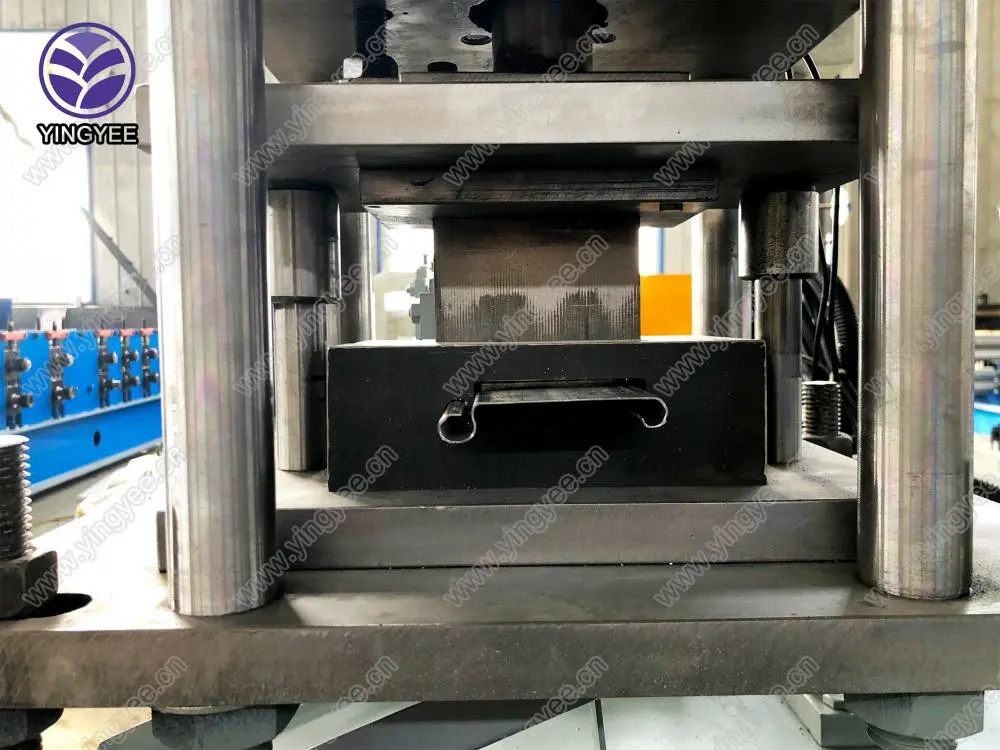
The Evolution and Importance of Downpipe Roll Forming Machines
In the ever-evolving world of manufacturing, the production of building materials has undergone significant transformations to enhance efficiency, reduce costs, and meet the increasing demands of modern construction. One such advancement is the downpipe roll forming machine, a specialized piece of equipment designed for the continuous production of downpipes used in drainage systems. This article will explore the principles behind downpipe roll forming machines, their benefits, applications, and their role in sustainable construction practices.
What is a Downpipe Roll Forming Machine?
A downpipe roll forming machine is a type of machinery that continuously shapes flat metal sheets into downpipes, which are essential components for effective rainwater management. This process involves feeding a flat strip of metal through a series of rollers that progressively bend and shape it into the desired profile. The final product is typically a cylindrical or rectangular pipe used to channel rainwater from roofs into drainage systems.
The Roll Forming Process
The roll forming process employed by downpipe machines provides several advantages over traditional manufacturing techniques. Firstly, it allows for continuous production, meaning that long lengths of downpipe can be created with minimal interruptions. The machine can handle various materials, including galvanized steel, stainless steel, and aluminum—providing versatility in applications.
The primary steps in the roll forming process include
1. Material Loading A flat metal sheet is loaded into the machine. 2. Roll Forming The sheet passes through a series of rollers that shape it incrementally. Each roller is precisely designed to achieve specific bends and angles. 3. Cutting Once the desired length of downpipe is formed, the machine will automatically cut sections to size. 4. Quality Control The finished products undergo quality checks to ensure they meet the required specifications and standards.
Benefits of Downpipe Roll Forming Machines
Downpipe roll forming machines offer numerous benefits, making them a popular choice among manufacturers

1. Efficiency The continuous nature of the roll forming process significantly reduces production times compared to other methods, allowing for high-volume output. 2. Material Savings Roll forming minimizes material waste as it utilizes nearly the entire strip of metal fed into the machine, making it a cost-effective option. 3. Precision The use of advanced technology and computer numeric control (CNC) systems allows for high precision in the forming process, ensuring consistency and standardization in products. 4. Customization Manufacturers can easily customize downpipes in terms of size, shape, and finishing to meet specific project requirements. 5. Ease of Operation Modern roll forming machines are equipped with user-friendly controls, making operation simpler and reducing the skill level required for machine operators.
Applications in Construction
Downpipes are critical in construction projects, as they prevent water damage by directing rainwater away from buildings. The applications of downpipe roll forming machines are extensive and include
- Residential Construction Downpipes are essential components of residential buildings to manage roof drainage effectively. - Commercial Structures Large commercial buildings utilize downpipes to handle significant amounts of water runoff. - Industrial Facilities In industrial settings, downpipes help prevent flooding and water accumulation around machinery and equipment. - Infrastructure Projects Bridges, overpasses, and highways benefit from effective drainage systems facilitated by downpipes.
Sustainability and Future Prospects
As construction practices shift towards sustainability, downpipe roll forming machines contribute positively by enabling the production of recyclable materials and reducing waste. The ability to produce downpipes in various materials means that builders can choose eco-friendly options that align with green building standards.
Moreover, advancements in technology continue to enhance the efficiency and capability of roll forming machines. Innovations such as automation, AI integration for predictive maintenance, and improved energy efficiency are set to shape the future of downpipe manufacturing.
Conclusion
The downpipe roll forming machine represents a leap forward in the manufacturing of critical drainage components for the construction industry. Aside from improving efficiency and reducing waste, these machines are essential for meeting the challenges of modern construction demands, ensuring sustainability, and offering innovative solutions for water management. As we continue to embrace new technologies, the future of roll forming appears bright, paving the way for more advanced, environmentally friendly manufacturing practices.